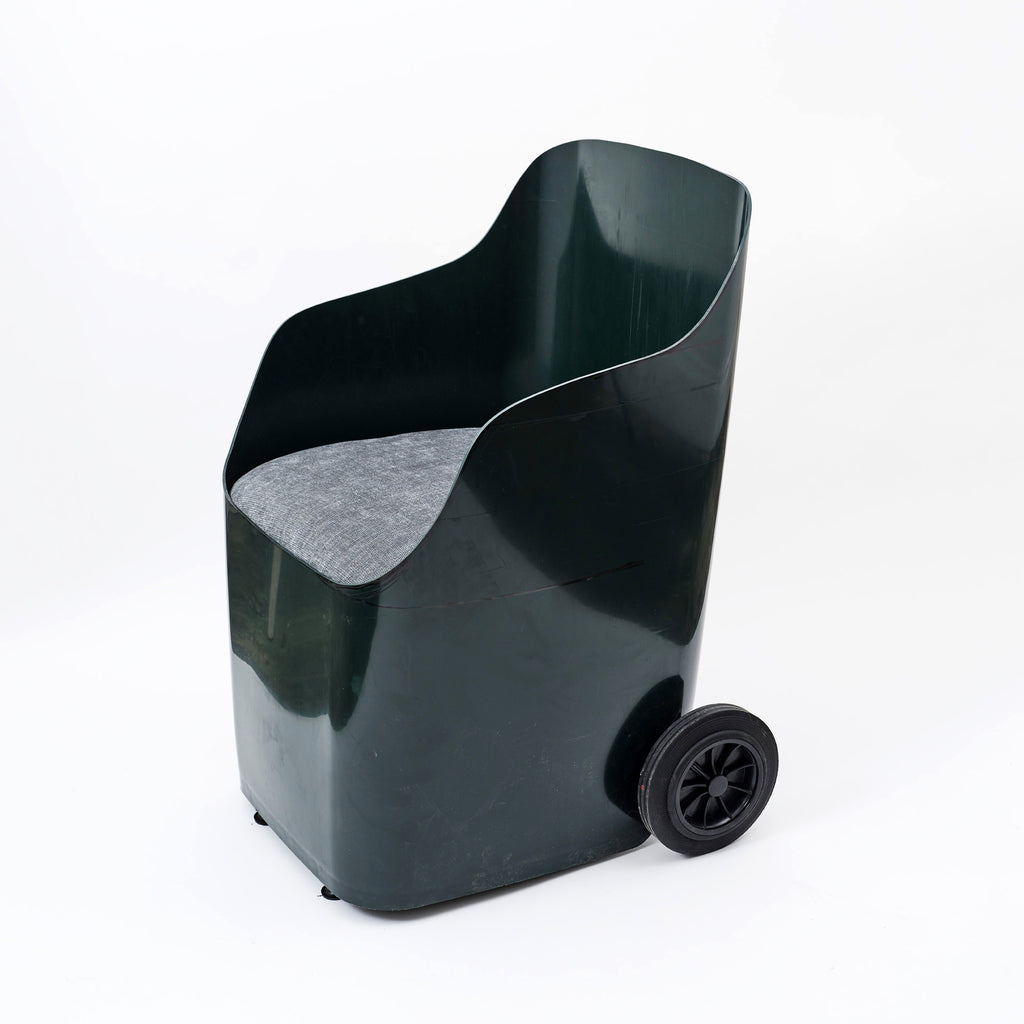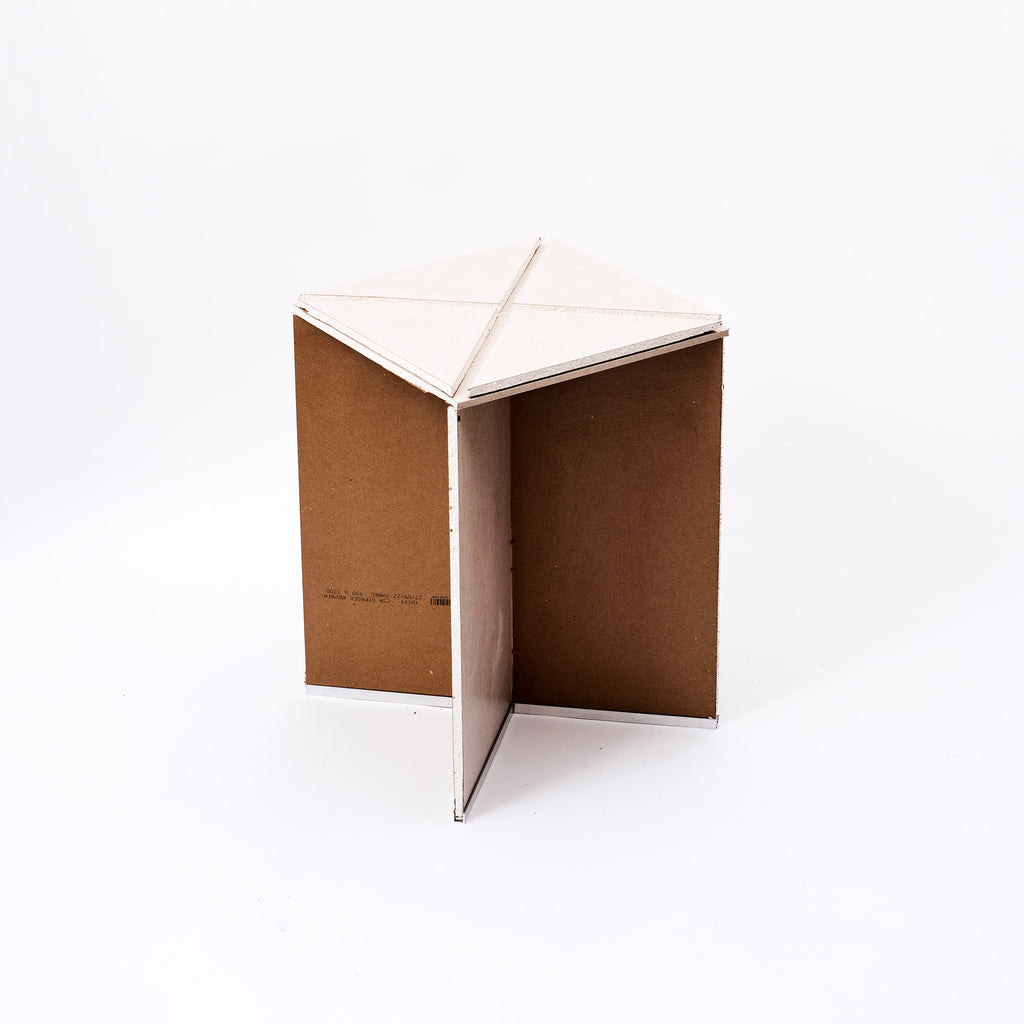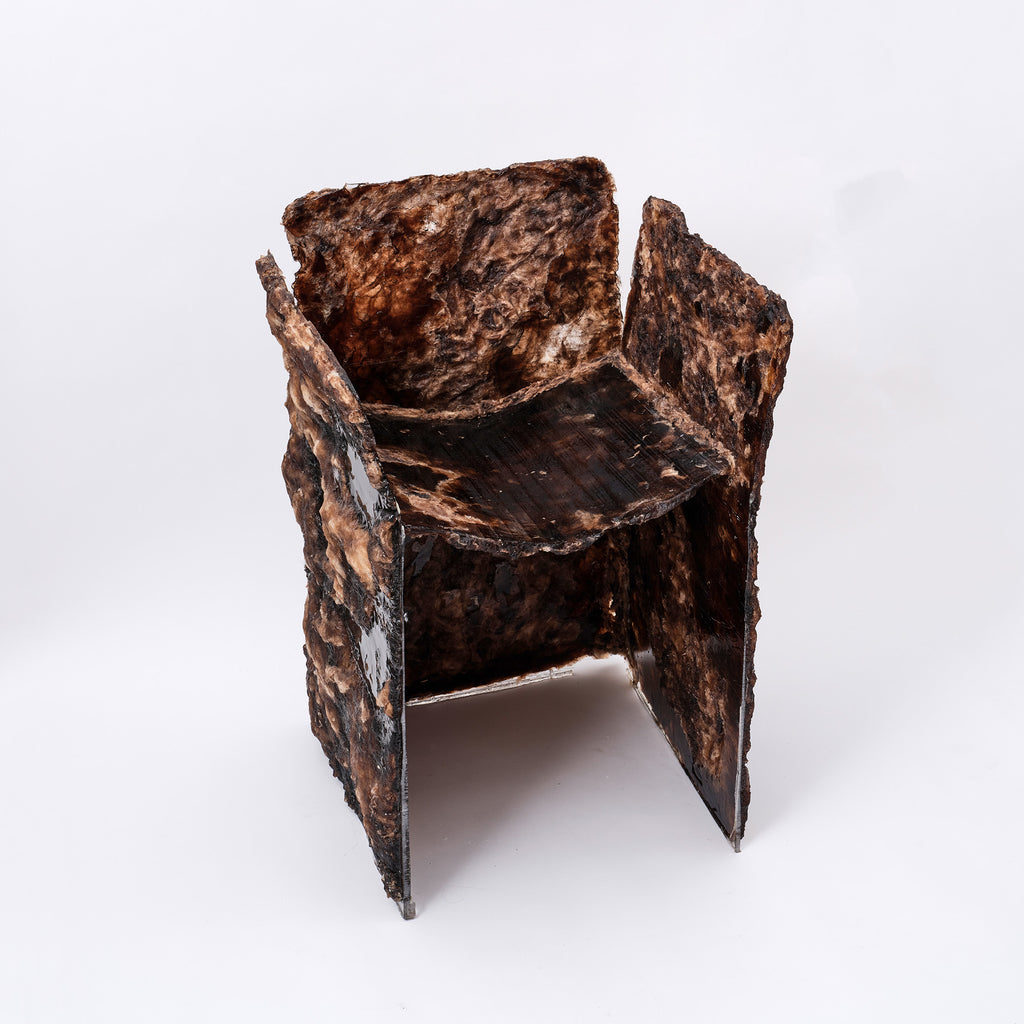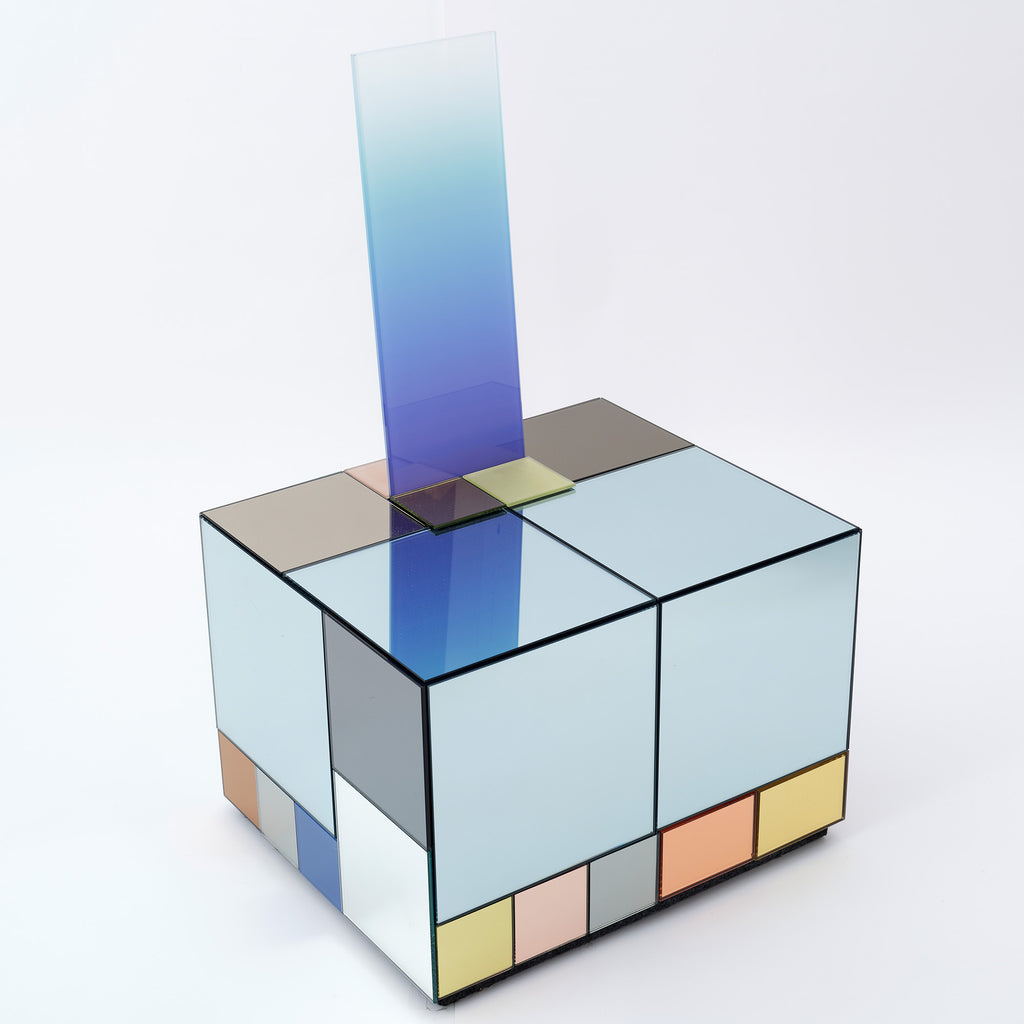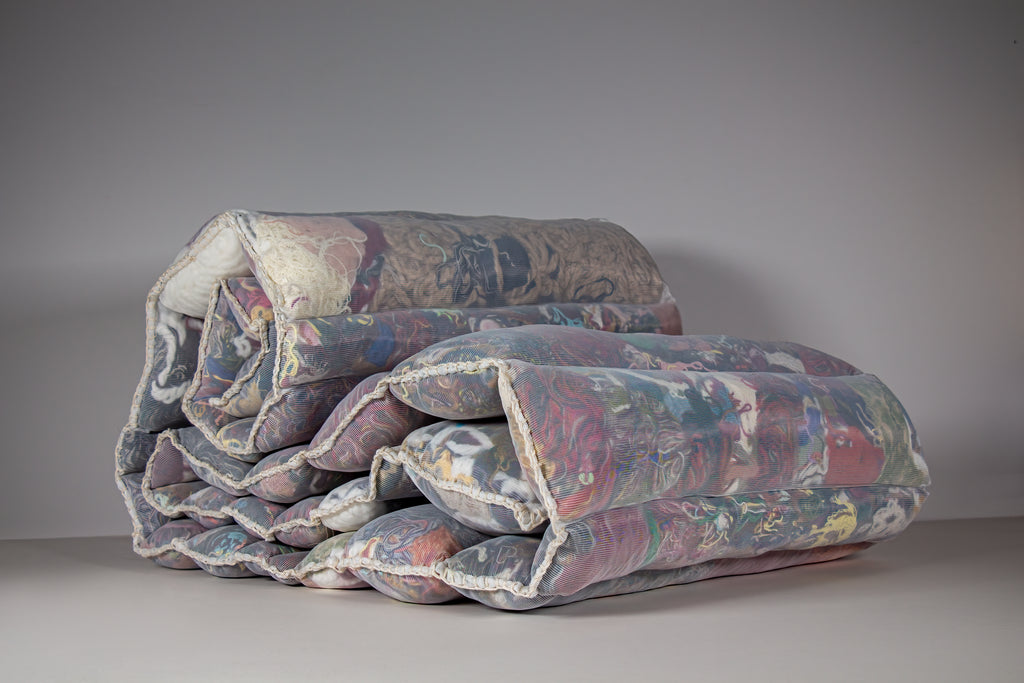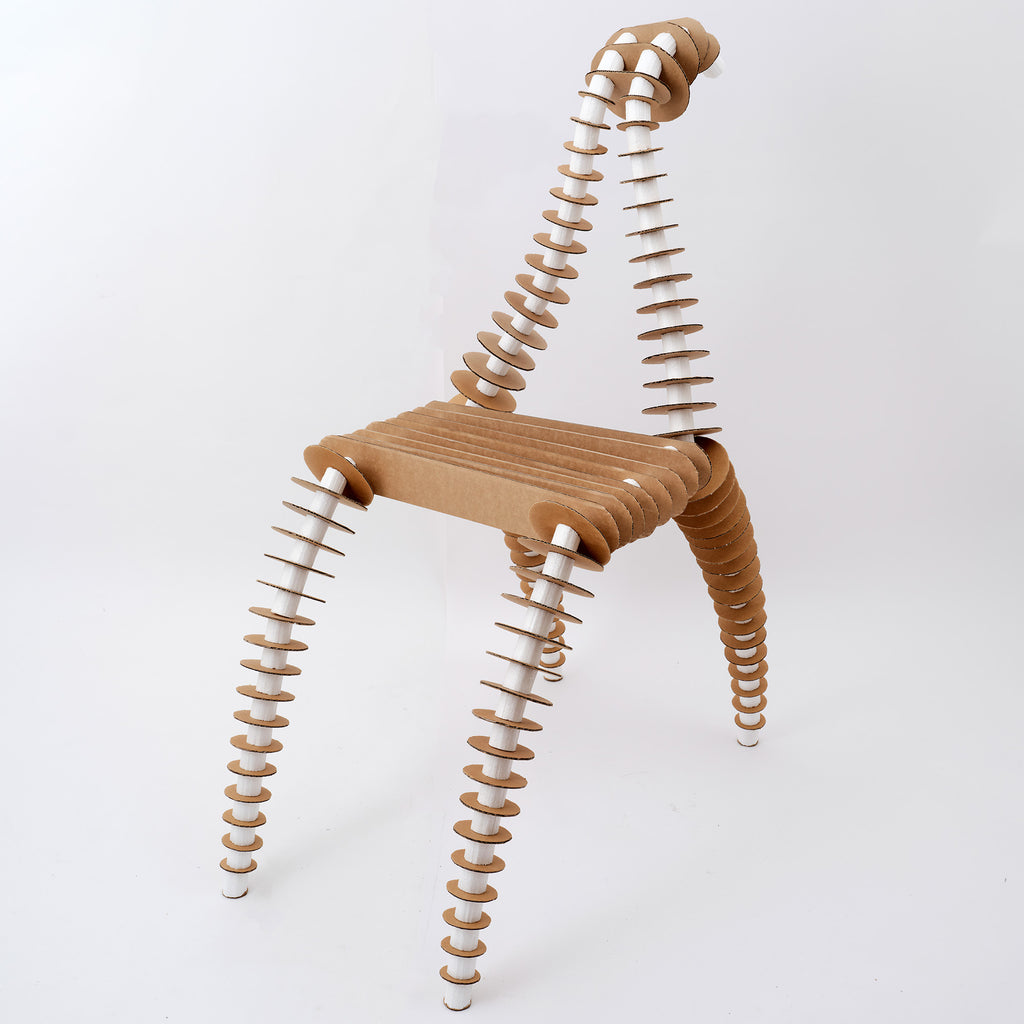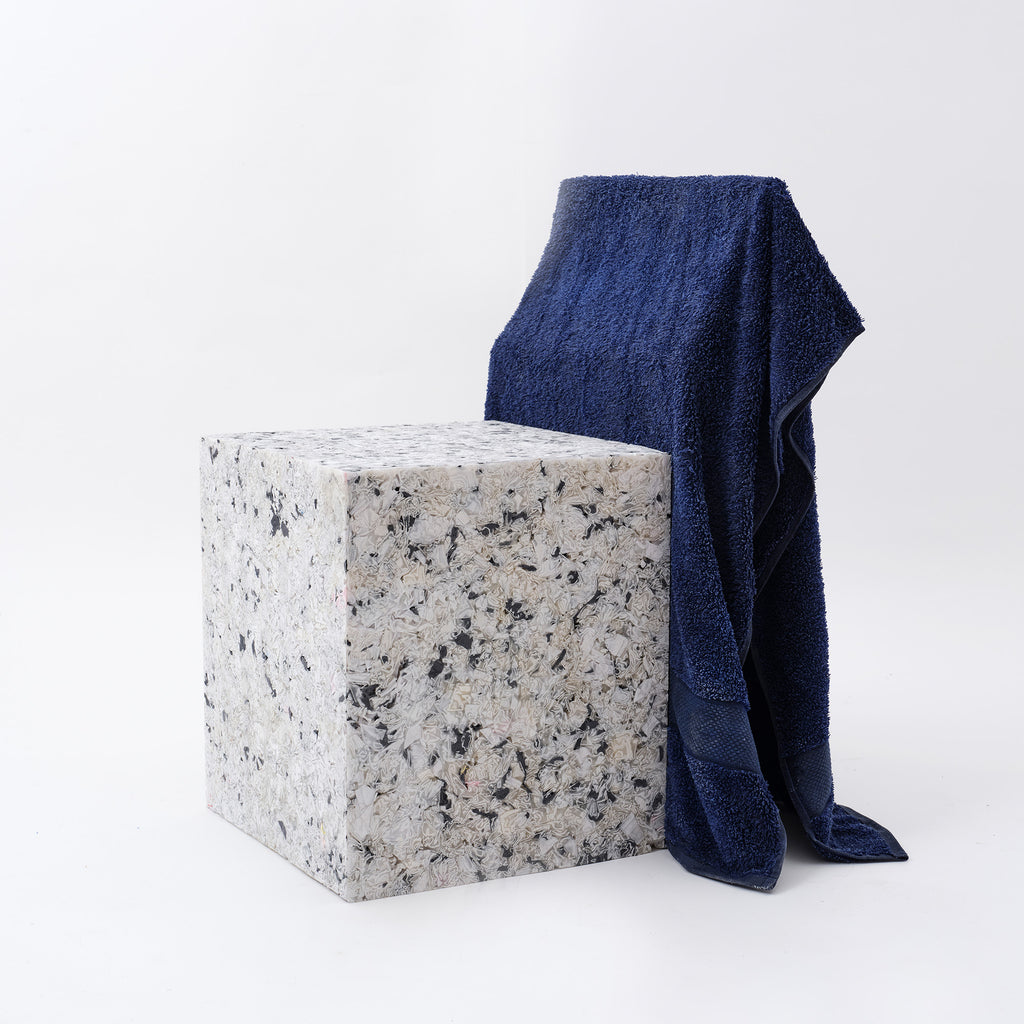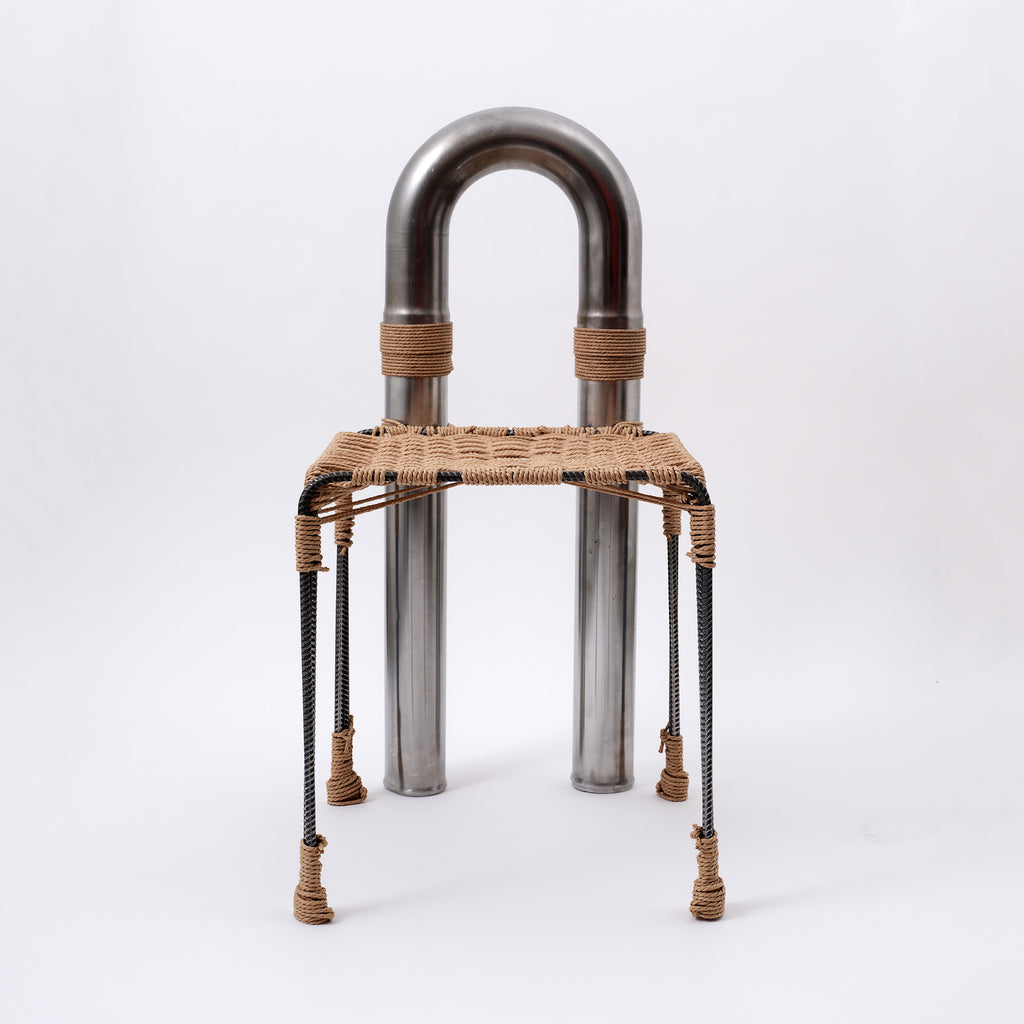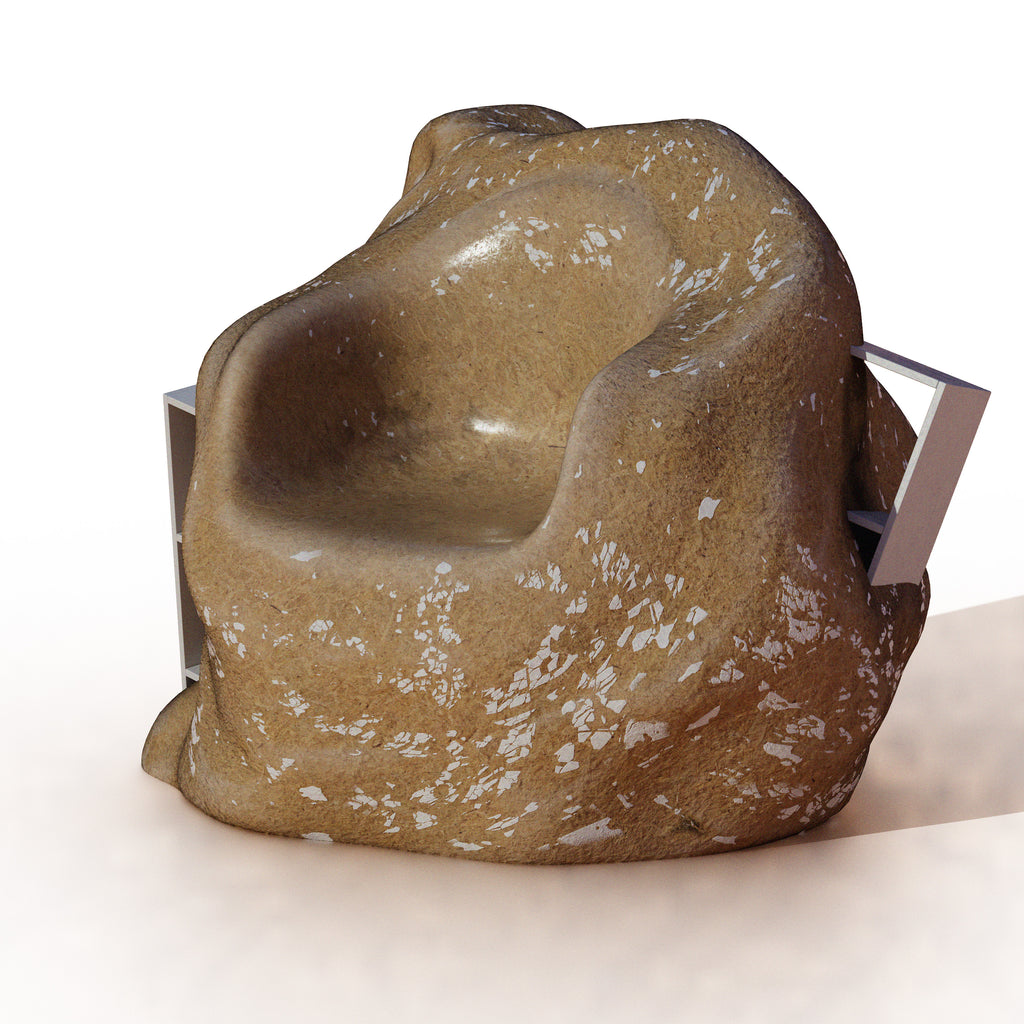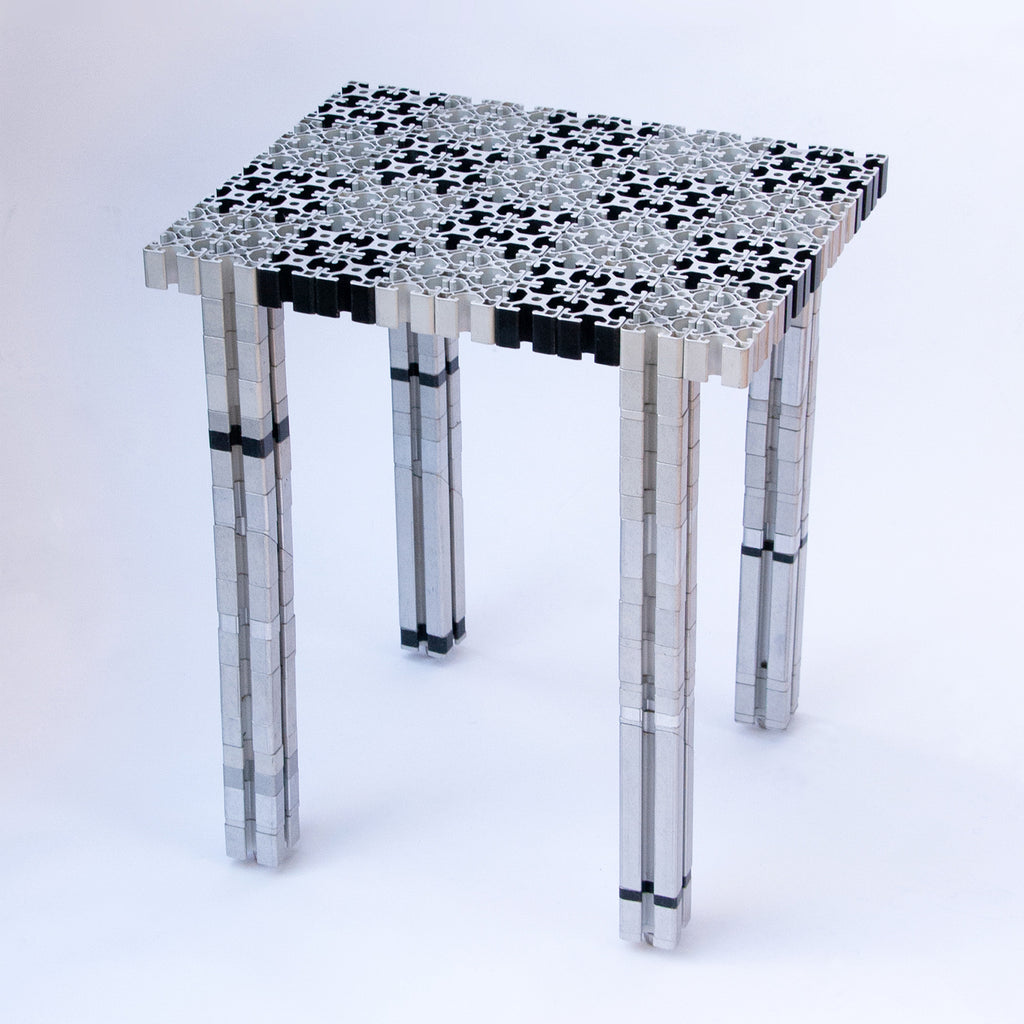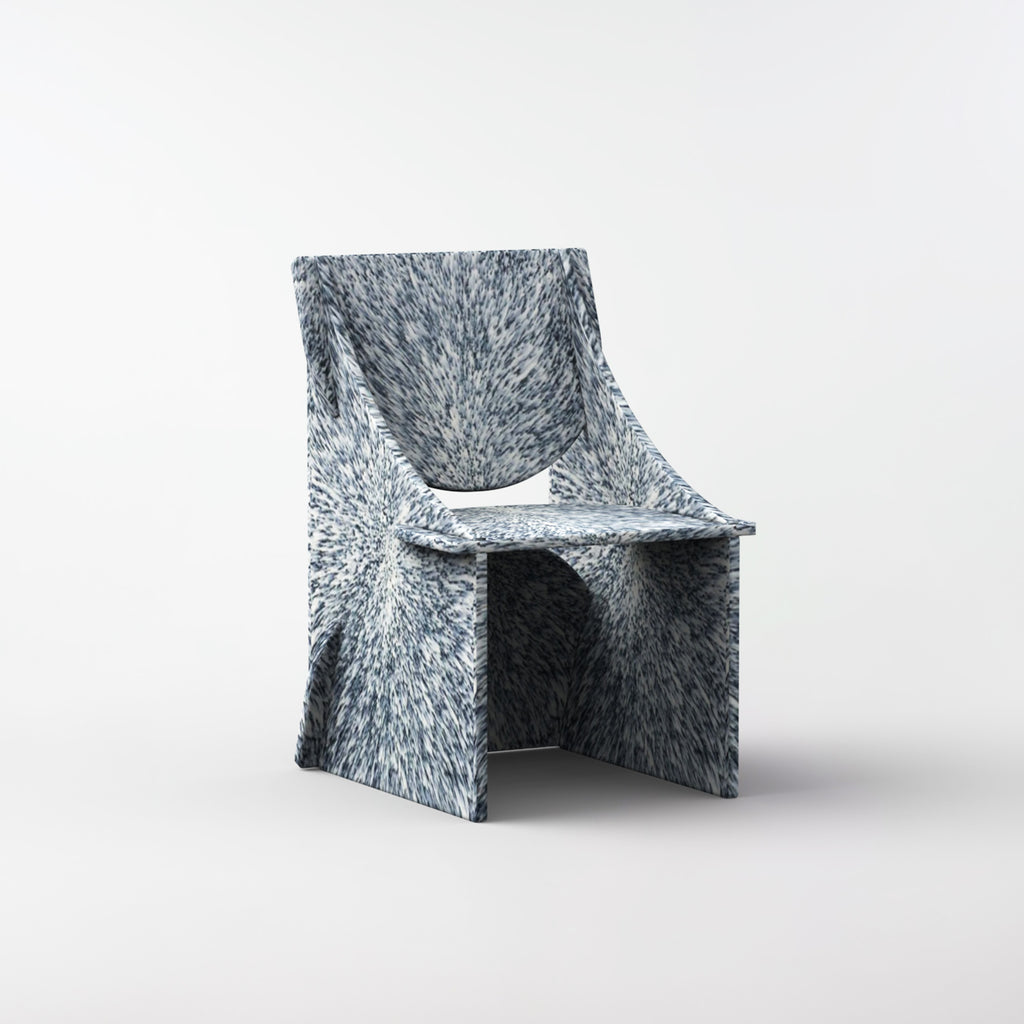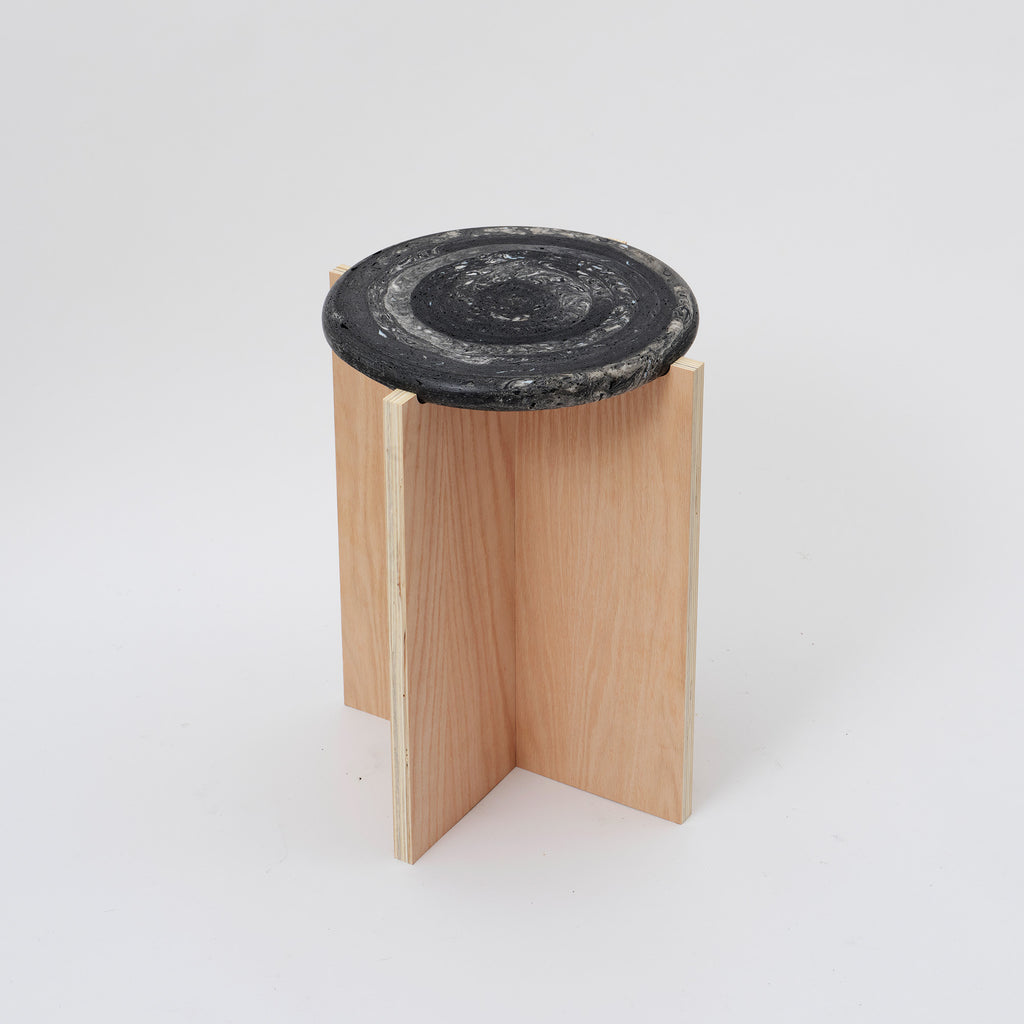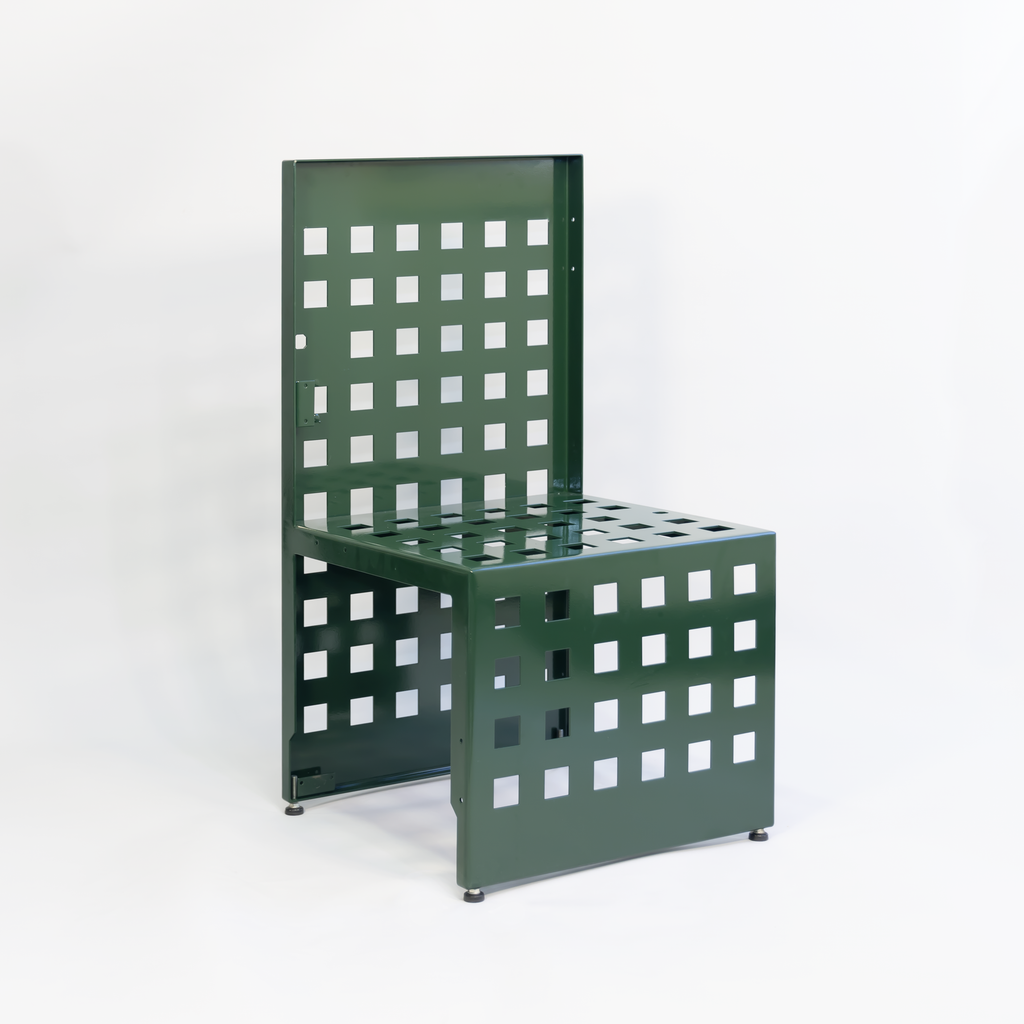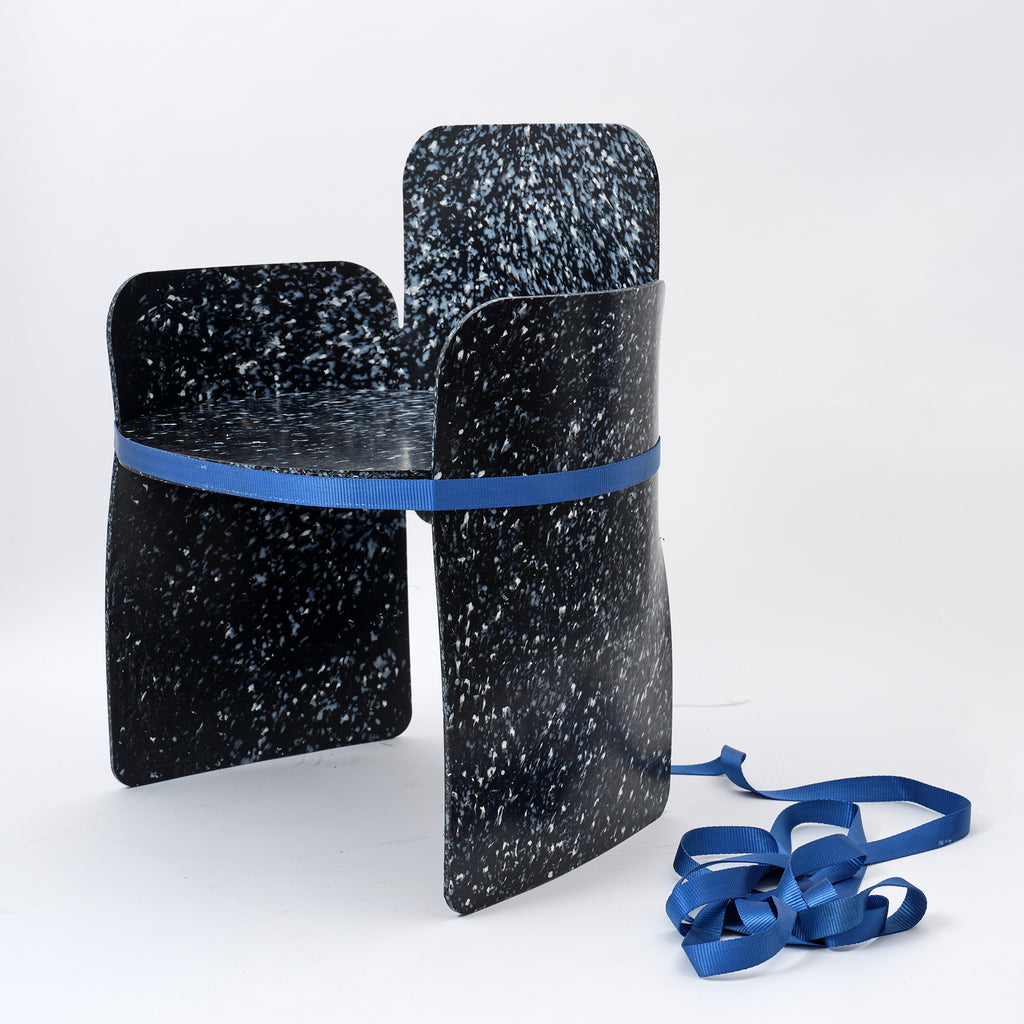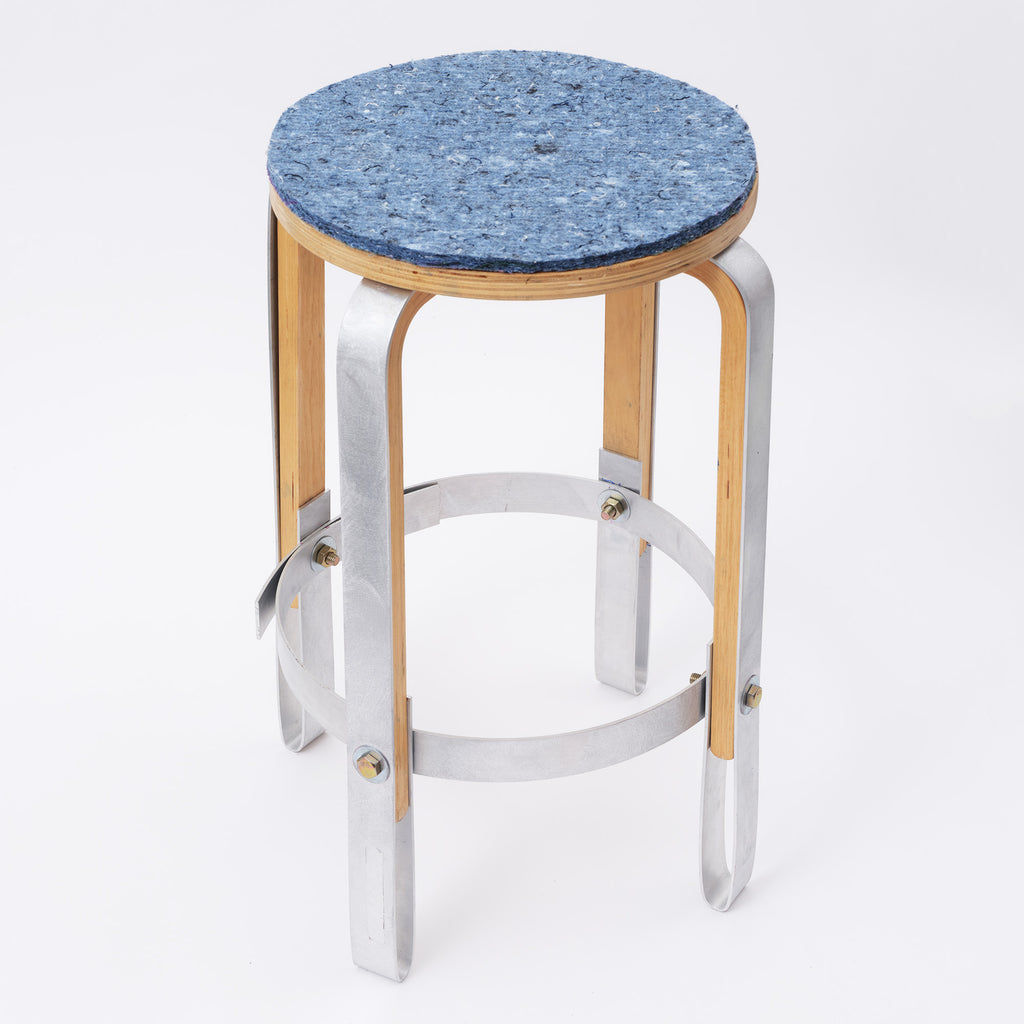Availability
2022
In a world where we encounter a shortage of resources and ever changing social conditions, the lifespan of design must be reinvestigated and expanded to consider a wider range of materials and fabrication techniques. ‘Availability’ aims to connect designers with traditional technologies to engage with and consider the environmental impact of every project. How might we employ new approaches to fabrication with consideration to life-cycle, future functionality and environmental footprint? Why mine something native and diminishing when we can reuse, reappropriate and reconfigure pre–existing components, materials and systems?
‘Availability’ invites designers to respond to the theme by designing and fabricating a chair. Adapting proprietary components, reinventing existing systems and exploring ‘off-the-shelf’ materials, emphasis is placed upon on how available materials can be reimagined and used in inventive ways. The brief calls for low-tech assembly of high-tech material or vice versa, recycled, waste, bio and readily available materials requiring minimal intervention and customisation.
Photographer: Jana Langhorst & Felix Bardot
Graphic Designer: M. Giesser
If it doesn’t get collected I’ll put it in the bin. / Adam Cornish
I once overheard this comment at an exhibition for collectable design by the artist. I was so very saddened and somewhat disillusioned by this comment. If not even the artist loves the work, what is the point? My piece aims to explore the effect of collectable design and start a dialogue around the intent of creating collectable work. Materials: Upcycled garbage bin & upholstery
3.8.4 / Adrian Fernandez
What if inexpensive, readily available materials and tools were sued to construct furniture, rather than specialist ones? 3.8.4. Takes the most common construction material - Plasterboard sheets - and uses it to do just this, using only a stanley knife, a ruler and some glue. 3.8.4. Came about from thinking about how expensive and inaccessible tools and materials can be for the average person looking to make their own furniture. This led to test various ubiquitous materials to solve this problem, ultimately landing on plasterboard for its accessibility (is readily available at Bunnings and other hardware stores), affordability (a standard sheet of Plasterboard is less then $20), and ease of working with (can be cut with a stanley knife). Composed of gypsum plaster between two layers of papers, the boards can be scored with a rule and knife before being snapped by hand to build each piece. 3.8.4. can be built in under a couple of hours, lending new applications to this widely available material, while also giving more people the experience of making their own furniture in an extremely democratic and accessible way. Materials: Plasterboard Sheet
Stopple / AND Studio
‘Stopple’ is a stool, made from commonly available building materials, fibre reinforced polymer (FRP) sheets and silicone. ‘Stopple’ plays with ideas of layering, contrast and texture, and functions via connection and combination. The stool components are cut from sheets of reclaimed FRP grating, a mass produced construction material while the form of the stool components are dictated by the nature of the material, a gridded sheet product. Additionally, recycled PLA is utilised to 3D print molds for a silicone seat cushion which appears to be extruded through the grid, further highlighting the rigid rectilinear forms of the FRP grating and providing a softer interface for the user to sit on. The top FRP piece interlocks with the silicone cushion component. This is intended to enable longer FRP top components to key into multiple silicone topped bases and to be arranged in numerous configurations. Materials: Fibre reinforced polymer (FRP) & silicone
Connector chair / BCDO
Connector Chair exists as one of an infinite number of furniture configurations made possible with BCDO’s Universal Connector, and as an exercise in designing with abundance rather than scarcity. Our intention is to fortify the culture of reusing and recycling hard rubbish objects, while reclaiming the power of convenience monopolised by fast furniture, and offering an adaptability that mass-production withholds. The heart of the unit is a common hose clamp, encompassed by four identical castings that secure nearly any board material without puncturing or damaging it. The Connector is intentionally stylistically neutral, and lends itself to a range of contexts; as well suited to the found materials that comprise Connector Chair as it is to dressed timber, painted board or acrylic sheet. Not only adaptable to evolving needs but to evolving tastes. It enables a mindset that when faced with, for example, a growing library, seeks not an entirely new bookcase but only some longer boards, and the action of changing configurations rewards this ethos with unblemished materials that retain their initial value. In favour of the longevity of an object, we choose to explore the longevity of a system. We are currently testing 3D printed versions of the connector that utilise topology optimisation processes to achieve ideal material volume to strength ratios, and these will be released as open source STL files, free for anyone to print and adapt. Exploiting the ubiquity of hose clamps and the unconstrained nature of board compatibility, the Universal Connector to make itself limitlessly adaptable, configurable, and available. Materials: Recycled aluminium, Hose clamps, Found board material
Insulate Chair / Bolaji Teniola
nsulate, a chair by emerging furniture and industrial designer Bolaji Teniola is a representation of materiality and process exploration inspired by the materials, elements, textures and manufacturing processes found in contemporary architecture. Using Earthwool, an off-the-shelf product produced from recycled glass and created for internal wall and ceiling insulation, Teniola takes what is generally unseen and brings it to the forefront, reimagining Earthwools application. To construct the Insulate chair, the layers of Earthwool insulation are peeled back to alter their thickness and then encased with locally sourced bio-casting epoxy resin to minimise contact irritation and highlight what Teniola sees as an unusual but equally intriguing texture. Insulate is intended to be welcomed by fascination and confusion due to its warm hues, textural composition and unusual material use. In addition, the bio-casting resin allows for transparent sections due to the variance in material thickness once peeled, enhanced further by ambient or accent lighting. Finally, the Insulate chair is in line with Teniola's current studio practice focus; to develop conceptual pieces via an investigative approach and display the viability of alternative materials. Materials: Earthwool Insulation Batts, Bio-Casting Epoxy Resin, Megapoxy 69 Impact Resistant Expoxy Adhesive
30mm Pine Corner Moulding / Darcy Zelenko
The approach undertaken to develop this object concerns the utilisation of distributed manufacturing to address a lack of availability of prototyping and workshop equipment. To counter this, a commonly available off-the-shelf ma-terial is selected to be the building block of a more complex outcome. This is through the adaptation of the design process to be able to achieve complexity through assembly, rather than fabrication. In this production par-adigm, computational design tools are emphasised over processes of mak-ing. Utilising a kit-of-parts, an algorithm is programmed to combine them in a specified logic to generate a defined outcome. Behaviors of stacking and intertwinement are favoured which minimise the use of fixings. This process maximises design complexity, a conceptual goal used to hone the computa-tional approach. Part design uses off-the-shelf components which are made using low-technology methods. A digital design tool overseas the human-cen-tred assembly process. The result is an outcome which uses principles of standardisation to achieve the highly bespoke. A right-angled profile was chosen to enable part nestings. Simple parts were created from standardised section lengths which were fabricated by the timber supplier. These parts were pro-grammed into a discrete design algorithm used to design a chair that creates visual interest from assembled complexity. Conceived using highly digital means, assembled in a low tech way, from standardised materials. Materials: 30mm Pine Corner Moulding
Box 54 / Dean Norton & Jordan Fleming
Box 54 is an exploration of utilising collected samples and materials from our personal design practices. The chair is constructed from salvaged plywood sheets and embellished with mirror and prototype glass samples in a variety of colours, sizes and finishes while the blue gradient shard reflects monolithically through the mirrored seat. A simple geometric form that is elevated by its kaleidoscopic patchwork surface, expressing the reflective energy and light of its environment while connecting with its audience. Materials: Mirror samples, glass prototype samples and salvagers plywood
Inside/Out Chair / Elise Cakebread
Traditional upholstery has always re-purposed readily available waste and byproducts – horse hair, coconut fibre, hessian bags, newspapers. I wanted to explore a contemporary interpretation of these traditions using waste materials readily available to me. Furthermore I wanted to explore how the internal stuffing (the chair’s volume and form) could also act as a decorative feature – inverting the expectation that this element would be covered or hidden. The specific waste material used is immediately available to me – large quantities of production yarn waste. This was chosen for its availability and the marbled abstracted affect that is created when it is densely packed. The fabric used the outer upholstery is cast-off curtain sheers. The transparency of this fabric and the strength inherent in their nylon composition (a common household textile waste item overwhelming op-shops) make them an ideal material to use in this context. For its form the ‘chair’ draws on 70’s era fold-out lounges and traditional Thai folding pillows. The articulated sections allow the finished piece to be ‘rolled up’ into a functional and adaptable piece of soft furniture. Despite the unstructured nature of the materials used the density of those materials create a robust structured form and the articulated sections produce a puffy and inviting presence. This prototype demonstrates a technique for repurposing textile waste that could be scaled up and applied to a variety of furniture outcomes. Materials: Knit production waste (cotton, wool, acrylic, linen, mohair and rayon yarn), re-purposed nylon curtains, cotton thread.
Lami Stool / FOMU
The concept behind the Lami stool was to reuse an old, laminated particle board bench top to construct a small stool and highlight the features found in this material to give it a new life as a valued item. The form of the stool was designed to hide the particle board edges while also providing strength to the structure without needing any extra components for rigidity and stability. Laminated particle board is a commonly used material for kitchen bench tops, it is a low cost option with some really great qualities. It has a waterproof / heat resistant surface, it’s easy to clean and it can be found in a large range of colours and finishes. Although laminated particle board can be recycled, it is commonly disposed of as land fill when a kitchen is updated with new benchtops.We feel that there is something so nostalgic about the surfaces found on this material and it seemed fitting to see it used in a bold way. Materials: Laminated particle board
Giraffe Chair / Geoz Design
When we think availability, we think most of the time of procuring new materials and unfortunately disregard those in the landfill which could be upcycled. As we, as western societies, are so dependants of daily goods even if we try our best to reduce our environmental impact, a paradox emerges thinking of wealth as obstacle to success in preventing the waste. Then, I thought of Africa, one of the most populated continent on earth but also the least polluting. With 0.46kg of solid waste per capita per day, its impact is minimal compared to the 2.21kg of North America. As a tribute to those who have few but pay the price of mass consumption, I wanted to create a product made of leftover cardboards and polystyrene - this last one barely recyclable - to show African beauty in incarnating a Giraffe - so elegant, so fragile - as a chair. Made a boards of cardboard, spacers of Styrofoam, attached by off-cuts wires this chair combines simple assembling techniques and pleasing aesthetic.
Phyco Stool / Hung Hin Chan & Shimroth John Thomas
In Australia, around 20 million tonnes of construction and demolition waste are produced every year. To tackle this issue we found a circular solution from the most unlikely of spaces, the seaweed industry. Seaweed absorbs nitrogen and heavy metals and alleviates eutrophication and acidification while building habitat and diversification within the marine ecosystem. By utilising this fast-growing biomass responsibly and using this as a material for making, the resulting objects can be truly regenerative and sustainable. The idea of using existing construction waste in combination with biomaterials embodies this radical change of what we envision in the future. It displays new material capability and beauty while having an artistic yet functional approach. The concrete rebar footings add a rustic and raw texture, while still embodying its intrinsic robust and structural properties as the support for our chair. The seaweed biomaterial with its warm, light and organic cork-like appearance is used in the seat to highlight our transition to sustainability. This conceptual artifact contrasts traditional and emerging materials and technologies to tell our story of a regenerative future with seaweed in architecture. The material and process were designed to have a significantly lower embodied energy than the existing construction materials in the market and its organic texture and colour give a unique character to interior design. The seaweed biocomposites we’ve created consist of 100% biodegradable elements sourced from the seaweed farming process in Tasmania, as well as other locally available waste resources collected from nearby cafes such as waste sawdust, coffee grinds and cardboard. Materials: Seaweed, Sawdust, Paper, Coffe Grind, Steel, Concrete
You Are Sitting On My Undies / James McNab
For many of us, it’s an ongoing dilemma about what to do with clothing garments once they’ve seen better days. Do you throw them in the bin? Give them to the Salvation Army? Donate to charity? All of these are normal possibilities, The Formary®, a purpose driven sustainability consultancy and research agency estimate that around 80 billion items of clothing are made each year, three quarters of which end up in landfilled or are incinerated. This equates to about 3.3 billion tonnes of CO2e being given off every year (nearly that of the European Union). You Are Sitting On My Undies (YASOMU), aims to shed light on one of the most available and abundant post-processed materials on the planet, end of use textiles. By shredding the fabric into small pieces, and combining with a bio-epoxy by Australia's own Change Climate, we are able to achieve solid, reinforced composite panels fit for furniture. Once cured, the panels are sanded to bring through a marbling effect generated by the swirling, hardened textiles. YASOMU’s form references that of a beach chair, a commonly produced furniture piece often made from low quality construction materials and with a short lifespan. Materials: Misc fabric (mostly cotton and elastane), Bio-Epoxy
Weeames DSS / Joel Priestland
Since the early 1980’s, Australian replica furniture companies have been exploiting an IP loophole by producing cheap imitations of classic furniture pieces by designers such Charles and Ray Eames, Hans Wegner and Philippe Starck.This often means materials and build quality are sacrificed for achieving a ‘look’ for a price, and with original design classics such as the Eames DSW selling for $1300, Target’s $38.25 May well look attractive to a budget led consumer. My response to ‘Availability’ is based on the sheer amount of Eames DSW (Dining (Height) Side (Chair) Wood (Base), and DSR (Dining (Height) Side (Chair) Rod (Base)) I have seen awaiting hard rubbish collection around the suburbs of Melbourne over the past 12 years. As a father of young children, I’d often thought about how much fun an interior based swing seat would be and felt the Eames moulded chair could lend itself to that purpose. ‘Availability’ gave me the impetus to explore a solution that would allow anyone who finds a discarded Eames replica, to save it from landfill and create themselves a usable swing seat with minimal extra parts, all of which are readily available at hardware stores such as Bunnings. Introducing the Weeames DSS - Dining (D) Height, Side (S) Chair on Swing (S) Base. Available to everyone. Materials: 1 x found Eames replica, 1 x 9m Grunt 2500kg ratchet strap, 4 x 50mm seatbelt mounts, 2 x steel a frame joints, 5 x wooden fence posts
bound / Locki Humphrey
bound. is a piece which utilises ready-made, recycled and found objects to construct a modern piece of sustainable furniture which maintains a raw connection to materiality. ~ The concept was inspired by my local mechanics storefront, which I’ll often walk past and see perfect mandrel bent exhaust pipes ready for purchase. As somebody who has tried to get large metal forms manufactured in the past, the regular availability of these chrome pieces in the window always grabbed my attention. The backrest of the chair is made by combining a mandrel bent exhaust, pre-expanded at the ends for joining, slotted onto two straight exhaust pipes. The seat legs are made from concreting rebar offcuts: this U-bar shape is commonly used for galvanised ladder treads embedded into the walls of stormwater drains. The binding and seat are woven from Danish cord, a type of twisted paper rope which gained popularity for Scandinavian furniture construction in the 1940s. The foot stoppers are constructed from hand-carved recycled cork. ~ My design aesthetic tends to focus on producing simple forms with minimal intervention which maintain interest through materiality and execution. The goal for this piece was to design something which could not only be built without the need for complex manufacturing, but also to design something without the use of technical fixing or power tools (welding, rivets, glues, etc.). this keeps the design process as approachable and accessible as possible. It also allows for a design devoid of plastic entirely, neither in parts not paints, keeping it 100% re-usable & recyclable as it can be readily disassembled into base components. Materials: Steel, Aluminium, Paper and Cork
Recursive Eames Armchair / MOUND x Alex Goss
Our chair imprints the Eames silhouette upon the trash heap, symbolising the beginning and end of the design process. We are experimenting with re-mulched chipboard as material, and the landfill mound as a desirable form. Materials: Mulched Ikea Furniture, Resin
Thistle / Object Density
Ubiquitous, hardy, and often ignored, the thistle holds intricate beauty for those who look. Many design projects call for long consistent lengths of stock, limiting the possibility to repurpose, and reuse valuable resources. What happens to the odds and ends that are left? The offcuts, dead-stock and miss orders, waiting patiently in storage, lurking in scrap yards or collecting dust in a workshop bin. These materials were once highly sought after, and although that initial surge of potential has passed, still hold embodied energy, knowledge and process. Can we recontextualise and revalue before selling on to recycling yards? A process that does divert material from landfill, albeit with a steep energy expense. Through a process of scavenging, careful retreatment, and rebuilding, we seek to view aluminium T-slot extrusion in a new light. A typology designed for raw functionality that conceals such beauty within - we are allured by its cross section. We slice, tumble and re-collect, amassing a form with patterned iconography akin to ancient mosaics, yet with a lingering feeling that it may have been sent back from a dystopic superfuture. We are making now with the scraps of yesterday. This collection of aluminium offcuts were reclaimed from the scrap bin of an industrial production facility, and will be the extrusions’ last ditch hope at everlasting utility, in a form more beautiful than ever intended. This edition will be the first iteration of an ongoing series, with the intent to revalue that which has been left to the side. Materials: Aluminium, Steel fasteners
100% Chair / Rene Linssen
The 100% Chair responds to the theme ‘Availability’ through it’s exploration of new materials available to designers and showcases how these materials can be used to create contemporary furniture that is also better for our environment.The chair is constructed from a 100% recycled plastic sheet, made with Australian post-consumer and post-industrial HDPE plastic (such as recycled shampoo and conditioner bottles, milk bottles, bottle lids and more), manufactured in Sydney. A unique feature, that comes as a result of creating the recycled plastic sheet, is that no two chairs will ever be the same. The mix of colours and patterns created are unique every time. All parts of the chair can be assembled together without the need of any fasteners or glues. This allows the chair to be disassembled and recycled into new products at its end of life. Materials: Recycled plastic sheet
Polyphase 10 / Sarah Mair
Polyphase 10 is a result of ongoing discussions and research into waste, offcut and discarded materials interested in producing functional everyday objects that encourage users to think beyond the individual to the systems of waste that allow and limit our sustainable futures. Polyphase 10 addresses radical forms of material sustainability through shifting form, process and materiality – all moments of abundance and creative potential – in the creation of everyday objects. With Expanded Polystyrene (EPS) production set to grow to 10.6 million metric tonnes over the next 5 years, Polyphase seeks to articulate the availability and discomfort of this material consequence by intercepting the short-term value of abundant waste streams while stoking long term aspirations for unsustainable material reliance change. In the past, the fabrication of polyphase objects has been characterised by the highly efficient curing process of recycled EPS that necessitates designs that can be formed entirely in situ and require very little post-production. In the case of Polyphase 10, the process of production breaks away from the purely in situ methods that have characterised early projects and marks the beginning of a series of post-production material tests seeking out complementary solutions for refinement. This shift is a result of new grounds for investigation at the Queen Victoria Market. The nature of operations means the material experiences greater levels of organics contamination resulting in a lower grade, more variable product that lends itself to post-production. In keeping with site specific form creation, a crude disk of extruded polystyrene was shaped between two boards before being refined on a lathe to produce the seat, with the two plywood offcuts that acted as formwork becoming the frame on which the reformed polystyrene is seated. In transforming EPS into an everyday object Polyphase 10 intends to challenge our perceptions of waste, awaken our senses and question associations between waste, beauty and the every day, and formalise the possibilities of a material-oriented, sustainability-driven furniture. Materials: Recycled polystyrene & Plywood offcuts
Dining Chair / SIMULAA
An economy of reuse does not have to simply involve repair, and the injection of considered design into an artefact or set of materials that are lacking in value can be transformative, allowing them to take on a new life. The iconic ‘Brunswick green’ City of Melbourne bin, created in 1991 by industrial designer Ian Dryden, is slowly being decommissioned from our streets, destined for landfill. This has led us to rethink the way that civic waste is dealt with, and in this series we draw attention to an aspect of Melbourne’s urban identity that frequently goes unnoticed. Here, two City bins are rendered into four chairs, each one amplifying unique features of the original, using different sections of the bin; the lid, door, surround, base and adjustable brass feet. Finished with a fresh coat of the familiar ‘Brunswick green’ paint that distinguished the bins used “in heritage areas and garden precincts”. From some angles, they evoke the crafted furniture of Charles Rennie Mackintosh, or the facade of Looshaus in Vienna. From others, they resemble a more humble and utilitarian assemblage, akin to the practice of Enzo Mari. These chairs are intended as an illustration of intent, for a future of material scarcity and a City of palimpsests. Materials: Decommissioned/Disused Street Bins; Powder-coated steel, steel threaded rod, brass.
Assembled.hdpe / Skeehan Studio
’Assembled.hdpe’ is developed and made by SKEEHAN Studios in response to Alt Materials 2022 brief Availability. After a factory visit at Defy Designs we were inspired by their ethos, materials and manufacturing process. Defy Designs are leaders in plastic recycling within Australia, dedicated to pushing the boundaries of plastic recycling and manufacturing in Australia. The ‘Assembled.hdpe’ chair is made from Defy Designs' 100% post-consumer recycled high-density polyethylene (HDPE) plastic sheet, created from more than 9kg of post-consumer plastic. The chair is manually assembled under high tension using a readily ‘available’ strap. ‘Assembled.hdpe’ aesthetic is derived from the materials own distortion through the assembly process, balancing precision machining with brute force. As the material distorts, under pressure from the strap, the form of a chair is revealed. The ‘Assembled.hdpe’ chair is part of an ongoing series of material experiments by SKEEHAN studio, not preferencing the form of an object but rather a discussion on process and a circular economy for furniture design. Materials: 100% Recycled HDPE, Nylon Strap, Aluminum Clamp, Silicon Grip
Daddy long legs (Gillis Lundgren I love you) ; High stool / Ben Edwards
An adaptation of the iconic IKEA ‘frosta’ stool by seminal designer Gillis Lundgren, Daddy long legs (Gillis Lundgren I love you); High Stool further iterates Lundgren’s cheeky take on the original Alvar Aalto ‘stool 60’. The mass produced nature and low price point of the IKEA ‘frosta’ means that the low stool/ side table is a ubiquitous furniture item in households internationally. Extended using only components sourced from Bunnings Collingwood, this higher 'version of a version' piece expands on the versatility of the original to offer further application raising the seating height to suit bench top dining in domestic and commercial spaces.
"On show from 1 December ‘Availability’ invites designers to respond to the theme by designing and fabricating a chair. Adapting proprietary components, reinventing existing systems and exploring ‘off-the-shelf’ materials. Emphasis is placed upon on how available materials can be reimagined and used in inventive ways. Low-tech assembly of high-tech or vice versa, recycled, waste, bio and readily available materials requiring minimal intervention and customisation."
"availability by alt.material is an exhibition exploring new approaches to fabrication with consideration to life-cycle, future functionality and environmental footprint."
"Availability aims to connect designers with traditional technologies to engage with and consider the environmental impact of every project."
Exhibiting Designers
Sponsors
More Exhibitions



